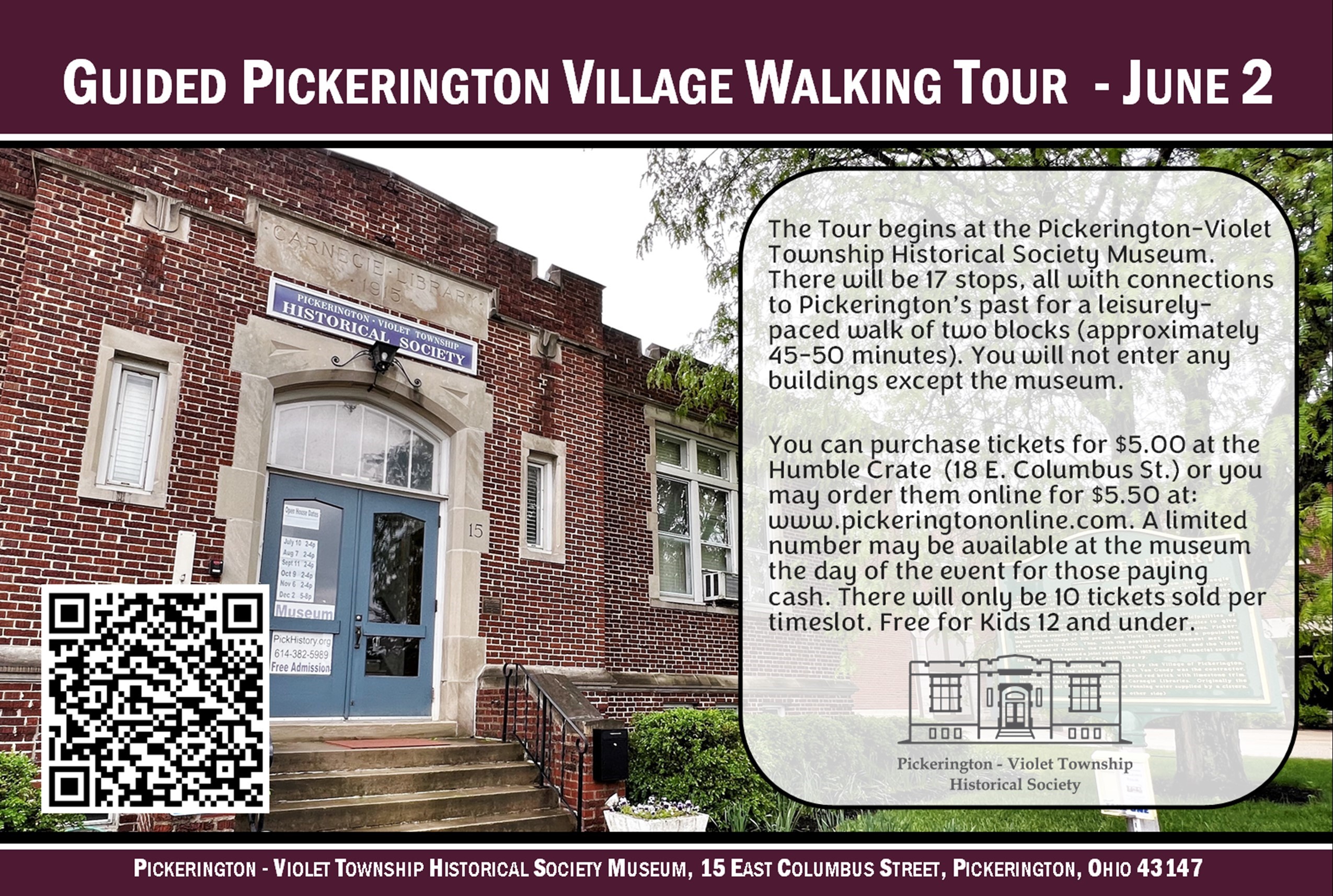
June 2, 2022
Vagabond’s Note: This is the third in our series of short stories about the events that shaped our history. All four of the stories in this series have to do with the interactions between the Americans and the Delaware or Lenape people during the time of the American Revolution. At the end of each story, I provide a set of GPS coordinates that you can use to visit some of the locations of the events discussed in the story. Instead of “Geocaching” we are playing “Geo-History.”
If you are following this series, you will recall that our last installment described the Treaty of Fort Pitt (AKA The Treaty with the Delawares) and the McIntosh Campaign which included the building of Forts MacIntosh and Laurens and the siege of Fort Laurens.

During the late 1760’s and early 1770’s, the Lenape people migrated into the Ohio country where they built villages along the Tuscarawas and Muskingum rivers. By the early 1770’s, the largest Lenape town was Goschachgunk (Joining of the Rivers) which was located at the confluence of the Tuscarawas and Walhonding rivers. Goschachgunk was one of the principal villages for the Turtle Clan of the Lenape or Delaware people. Over the years, the name has anglicized into the modern name of Coshocton.
During the 1770’s the other major Delaware town on the Tuscarawas River was Gekelukpechink or Newcomerstown. The story of the name “Newcomerstown” is one of those fun historical tales. Around 1757, Netawatwees became the chief of the Turtle Clan of the Lenape Nation. Around 1759, Netawatwees founded a town on the Tuscarawas River about 15 miles east of Goschachgunk (Coshocton). He named the town “Gekelukpechink” which was translated as “Black Bear Town.”

Public Domain Image
By the mid 1770’s, Gekelukpechink grew to a population of around 700 making it the largest town of the Lenape nation. Netawatwees translates to mean “Wise Adviser” or “Skilled Advisor.” During his travels, Netawatwees met a young white woman at another Indian town. She had been taken captive as a child and raised by the Indians. Netawatwees was immediately attracted to her and obtained permission from her Native American family to take her as a second wife.
As you can imagine, his first wife was not happy when Netawatwees arrived home with a much younger second wife. The first wife immediately began mistreating her younger sister-wife – refusing to call her name, instead referring to her as “That Newcomer.” Of course, people began making fun of chief Netawatwees and started to refer to him as “Chief Newcomer.” Over the years, the title “Chief Newcomer” stuck.
Instead of calling the town Gekelukpechink, people simply referred to it as “Chief Newcomer’s Town’ or simply as “Newcomerstown.” That name also stuck. Now you know why Ohio has a city called Newcomerstown! By the way, Netawatwees had a son named Bemino who became known by the English name, “John Killbuck.” Bemino also had a son who he named Gelelemend who became known as “John Killbuck Junior.” Gelelemend was one of the signers of the Treaty of Fort Pitt.
In 1772, Moravian missionary, Reverend David Zeisberger, accompanied by his assistant, John Heckewelder, their Christian Indian followers and several other white helpers, moved west from near Bethlehem, Pennsylvania. The group settled in the Tuscarawas River region of northeastern Ohio where they built the towns of Shoenbrunn and Gnaddenhutten.

When the war between the colonies and the British broke out, Chief White Eyes of the Delawares suggested that the Christian Indians should move to a location near the main Delaware town of Goschachgunk (Coshocton) so that he could protect them. (Most of the Moravian Christian Indians were Delawares.) In response, the missionaries and some of the Christian Indians moved to a location on the Muskingum River just south of Goschachgunk where they constructed a new town which they called Lichtenau which is German for “Meadow of Light.”
In the spring of 1780, the Moravian missionaries and their followers decided to abandon Lichtenau and return to their old homes at Gnaddenhutten and Shoenbrunn. As they headed upriver, John Heckewelder and several families decided to stop about six miles south of Gnaddenhutten and build a new settlement which they called “Salem” (Peace). A handful of the Christian Indians remained at Salem and the remainder continued to Gnaddenhutten and Shoenbrunn. They remained at Shoenbrunn, Salem, and Gnaddenhutten until 1781 when they were forcibly moved northwest to a new site on the Sandusky River.
In spite of the Treaty of Fort Pitt, the Delaware nation became more and more divided as the war between the Americans and the British dragged on. By 1780, some of the Delawares had joined the Wyandots, Shawnees and other Native Americans in supporting the British. Some of the Delawares supported the Americans, but most of them tried to abide by the 1778 Treaty of Fort Pitt and remain neutral.

On March 5, 1779, Lieutenant Colonel Daniel Broadhead replaced General Lathan McIntosh as Commander of the Western Department headquartered at Fort Pitt. Broadhead commanded the Western Department until May of 1781. During his tenure as commander of the Western Division, Broadhead made several excursions into Indian country. One of the last of those was in April of 1781 only a month before he was relieved of the command.
On April 7, 1781, Colonel Brodhead accompanied by 150 regulars from the 8th PA and 13th VA Regiments, and 134 militiamen, from the Westmoreland County, PA and the Ohio County VA militias, headed out along the Ohio River. Aware that some of the Delaware Indians of the Turtle and Wolf Clans had started supporting the British, Broadhead’s purpose was to meet with the Delaware tribal leaders to reinforce the alliance with them created by the 1778 Treaty.
On April 19, 1781, Broadhead’s army reached an area a few miles from the peaceful Delaware town of Gekelmukpechunk, (Newcomerstown), on the Tuscarawas River fifteen miles east of Coshocton. Broadhead sent a messenger to the Delaware chiefs inviting them to the east side of the Tuscarawas River to arrange an amicable resolution.

A few of the Delaware chiefs accepted the invitation. As soon as their delegation crossed the river towards Broadhead’s encampment, Lewis Wetzel ambushed them killing one of the chiefs with a tomahawk.
Knowing that a peaceful agreement was now impossible, Broadhead decided to attack Coshocton. Just south of Coshocton, they reached the peaceful Moravian Christian town of Lictenau. Fortunately, most of the Christian Indians had abandoned Lictenau the year before and returned to homes on the Tuscarawas River. On April 20, 1781, Broadhead’s Army destroyed Lictenau and then surrounded Coshocton.
Many of the Indians had already fled the town in advance of the army’s arrival. Trusting that the Americans would respect the 1778 Treaty of Fort Pitt, sixteen of the Indians simply surrendered to Broadhead’s army. The militiamen immediately killed and scalped all sixteen. (It is worthwhile to note that most of those militiamen were also involved in the Squaw Campaign under General Hand.)
Seeing the futility of surrender, the other occupants of the town continued fighting until another 20 or more were killed. Broadhead’s army took the remaining women and children as prisoners. In spite of the hospitality that Salem Indians had bestowed upon Broadhead’s men only days earlier, army elements headed northeast along the Tuscarawas River intending to destroy the Moravian Christian towns of Salem, Gnaddenhutten and Shoenbrunn.

Photo by Vagabond Historian
However, Broadhead sent a detachment of men under the command of Colonel David Shepherd to stop them. Shepherd succeeded in preventing the militiamen from harming the Christian Indian towns and the army returned to Fort Pitt with the women and children whom they had captured as prisoners. (Colonel David Shepherd lived in what is now Elm Grove which is located on the eastern side of Wheeling, WV. Shepherd’s Fort was located near the site of the current Elm Grove McDonald’s.)
After the destruction of their towns by Broadhead’s expedition, Chief Pipe and most of the remaining Delaware Indians moved northwest to settle along the Sandusky River, ten or fifteen miles north of Half King’s Wyandot town. The new home became known as “Pipe’s Town.” As a result of Broadhead’s action, Chief Pipe and most of the Delawares became firm supporters of the British during the remainder of the war. The Moravian Christian Indians stayed at their homes in Salem, Gnaddenhutten, and Shoenbrunn until they were forcibly moved to the Sandusky River region in the fall of 1781.
The next installment in this series will discuss the forced relocation of the Moravian Indians and the 1782 event known as the Moravian Massacre.
Geo-History
Each of the following sets of GPS coordinates will take you to a historic marker or historic site related to one of the locations where events described in the above story took place. If you are unable to travel to those locations and visit them in person, copy the coordinates and paste them into the search box on Google Earth. Then, Use the Google Street View to take a look at the location. Have Fun!

Fort McIntosh
Coordinates: N 40° 41′ 27.7″ W 80° 18′ 14.3″
A small park along the river commemorates the location of Fort McIntosh. It features several historical markers.
Fort Laurens Historical Marker
Coordinates: N 40° 38′ 21.9″ W 81° 27′ 20.6″
A small park also commemorates the location of Fort Laurens. If you visit the site in person, be sure to take a walk along the Ohio and Erie Canal which passes through the site of the fort. This is a great place to go with your children.
Netawatwees Statue in Cuyahoga Falls, Ohio
41° 8.686′ N 81° 28.483′ W
Click the + sign to zoom in
Newcomerstown
Coordinates: N 40° 16′ 28.77″, W 81° 35′ 24.56″
There is no historical marker commemorating Newcomerstown as a Delaware Indian village. The coordinates listed will take you to the middle of the Rte. 258 bridge over the Tuscarawas River at Newcomerstown, Ohio.
Lichtenau Historical Marker
Coordinates: N 40° 14′ 46.69″, W 81° 52′ 14.54″
The marker is located on the southeast corner of a busy intersection. If you decide to pay a visit and want to stop for a photograph, turn east onto Clow Lane and park at the apartment building a few hundred feet from the intersection
Broadhead Coshocton Massacre Historical Marker
Coordinates: N 40° 16′ 33.2″, W 81° 50′ 39.8″
This is on a residential street in Coshocton.
Salem Mission Historical Marker
Coordinates: N 40° 18′ 24.21″, W 81° 32′ 14.54″
This is on Rt 36 out in the country. If you visit in person, you will find a nice turnout where you can stop for a photograph.
Shepherd’s Fort Historical Marker
Coordinates: N 40° 02′ 35.42″, W 80° 39′ 31.0″
Located near Monument Place across the road from the Elm Grove Pharmacy in Elm Grove, WV
Thanks for taking time to read my story. Please contribute your comments! – VH
Please also check out previous installments of this series:
– Geohistory: Flint Ridge
– Geohistory: USS Shenandoah
– Geohistory: Sears Mail Order Houses
– Geohistory: 135th Ohio Infantry at Andersonville Prison
– Geohistory: The Squaw Campaign
– Geohistory: Treaty of Fort Pitt, McIntosh Expedition & the Siege of Fort Laurens



















